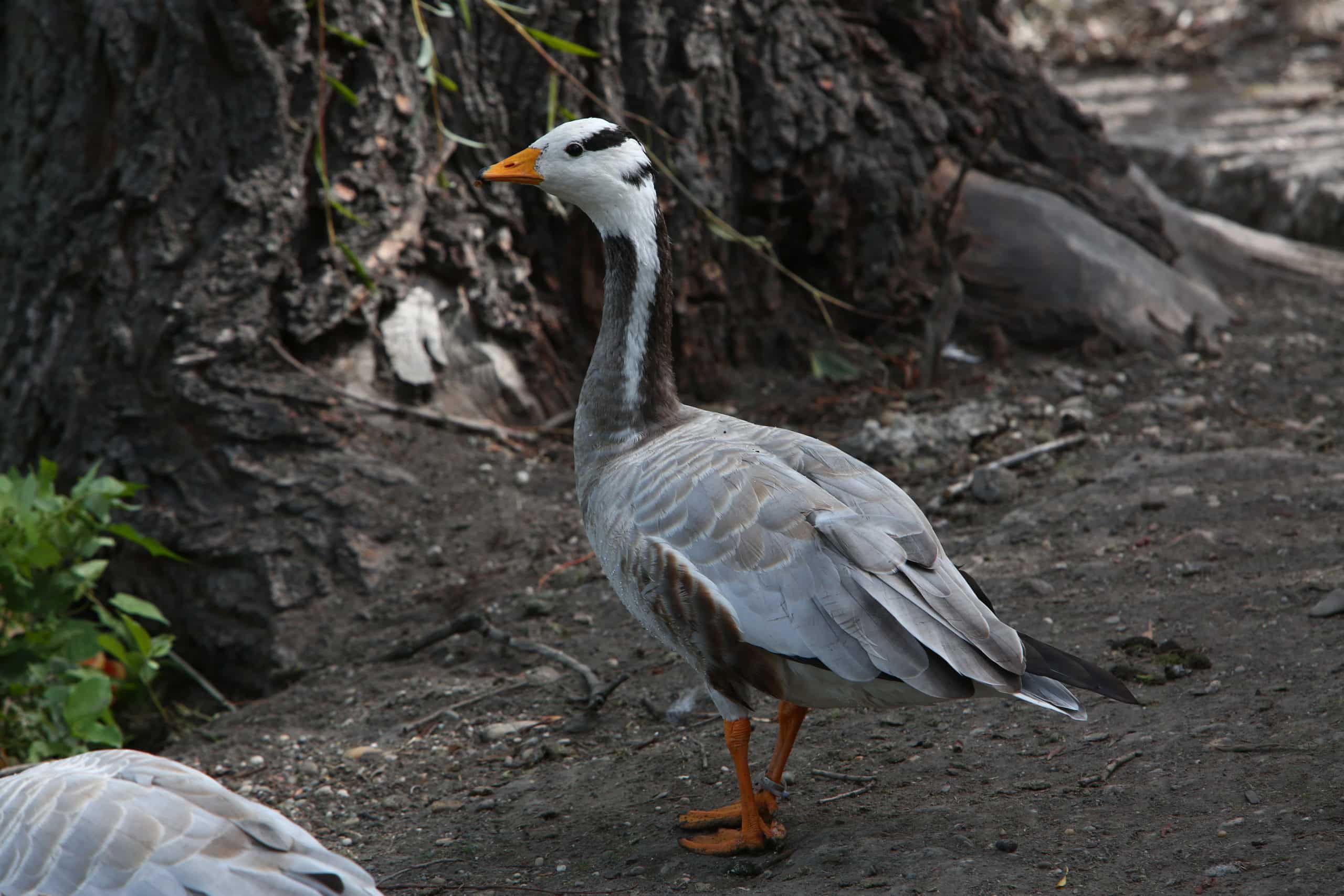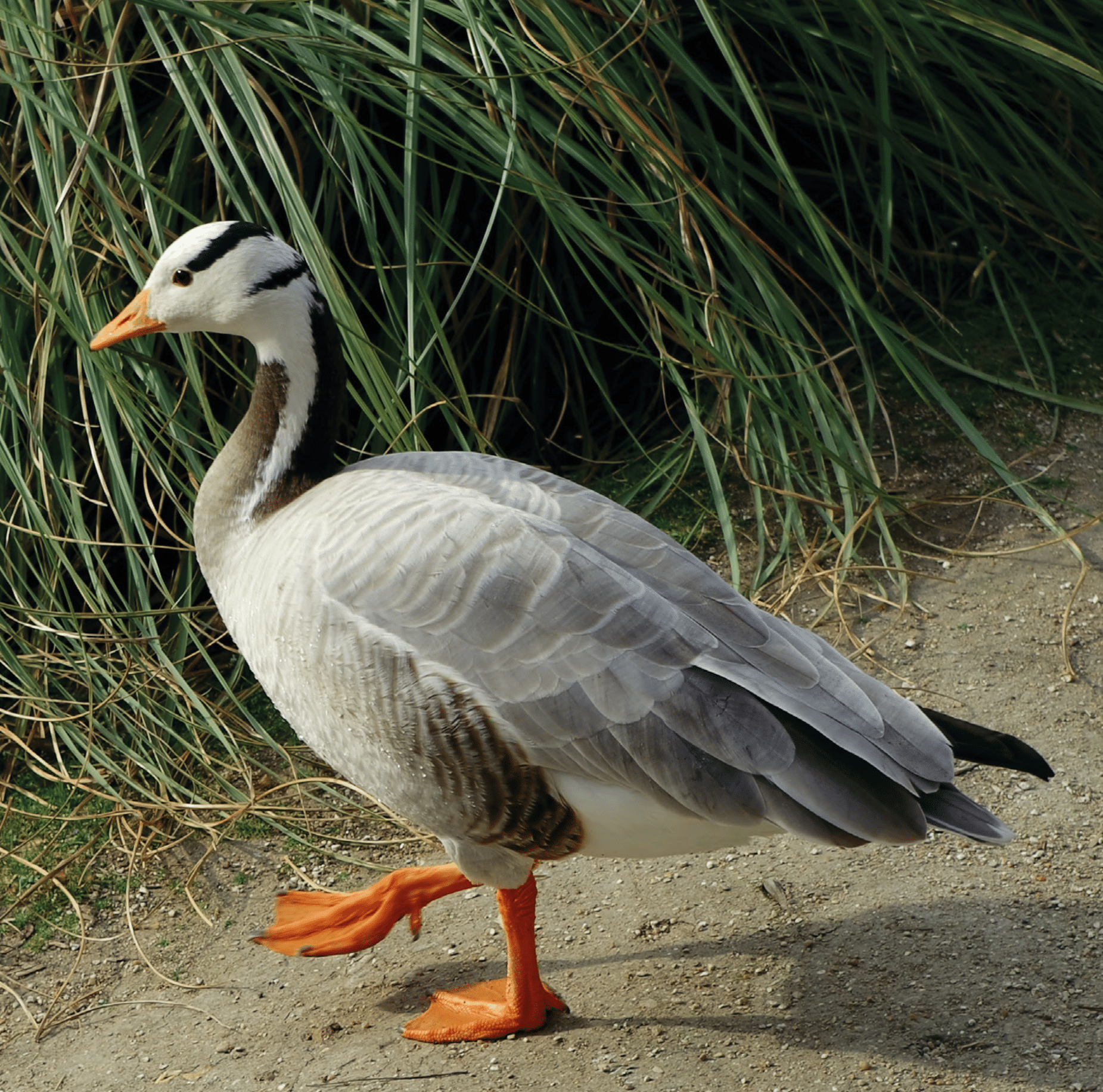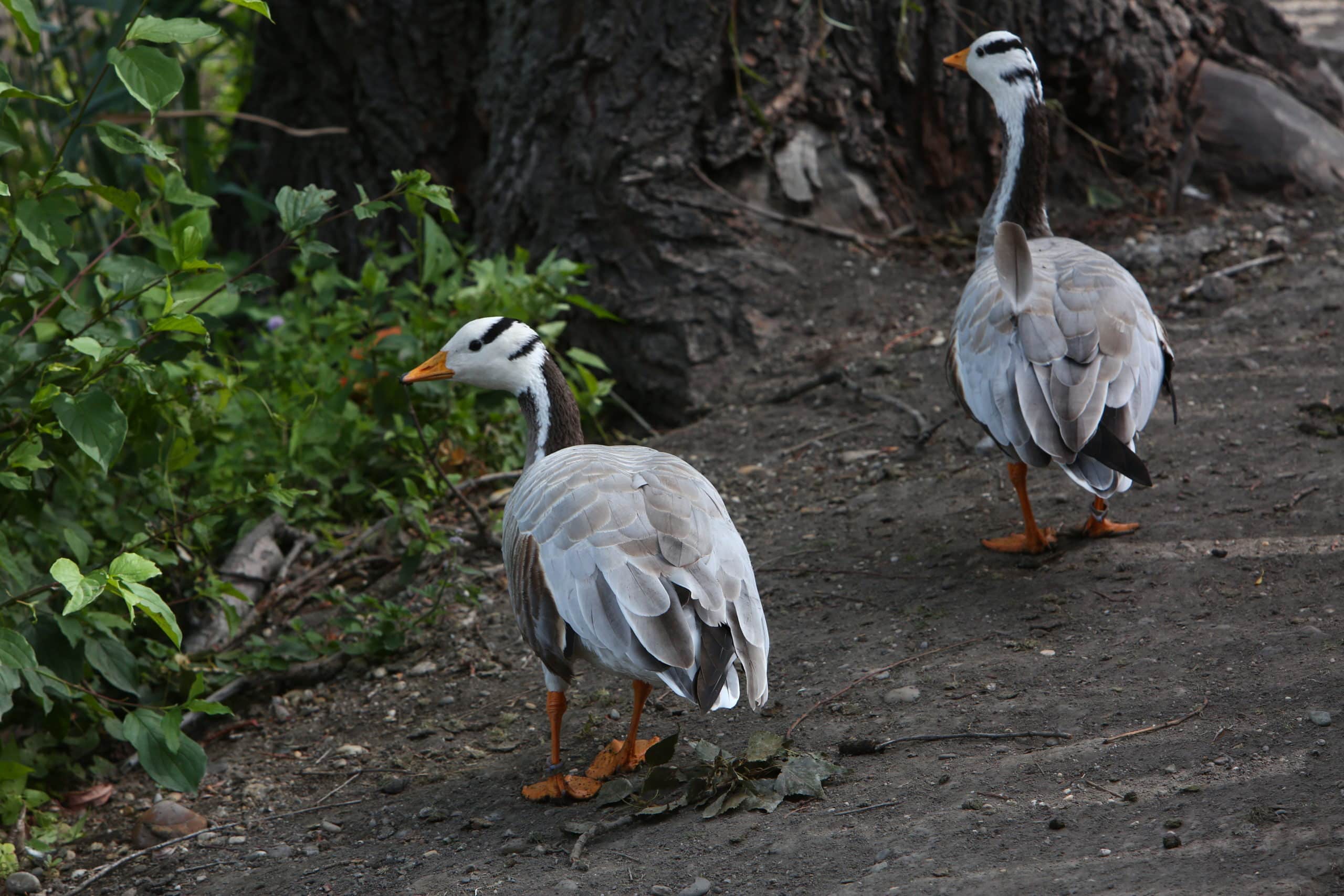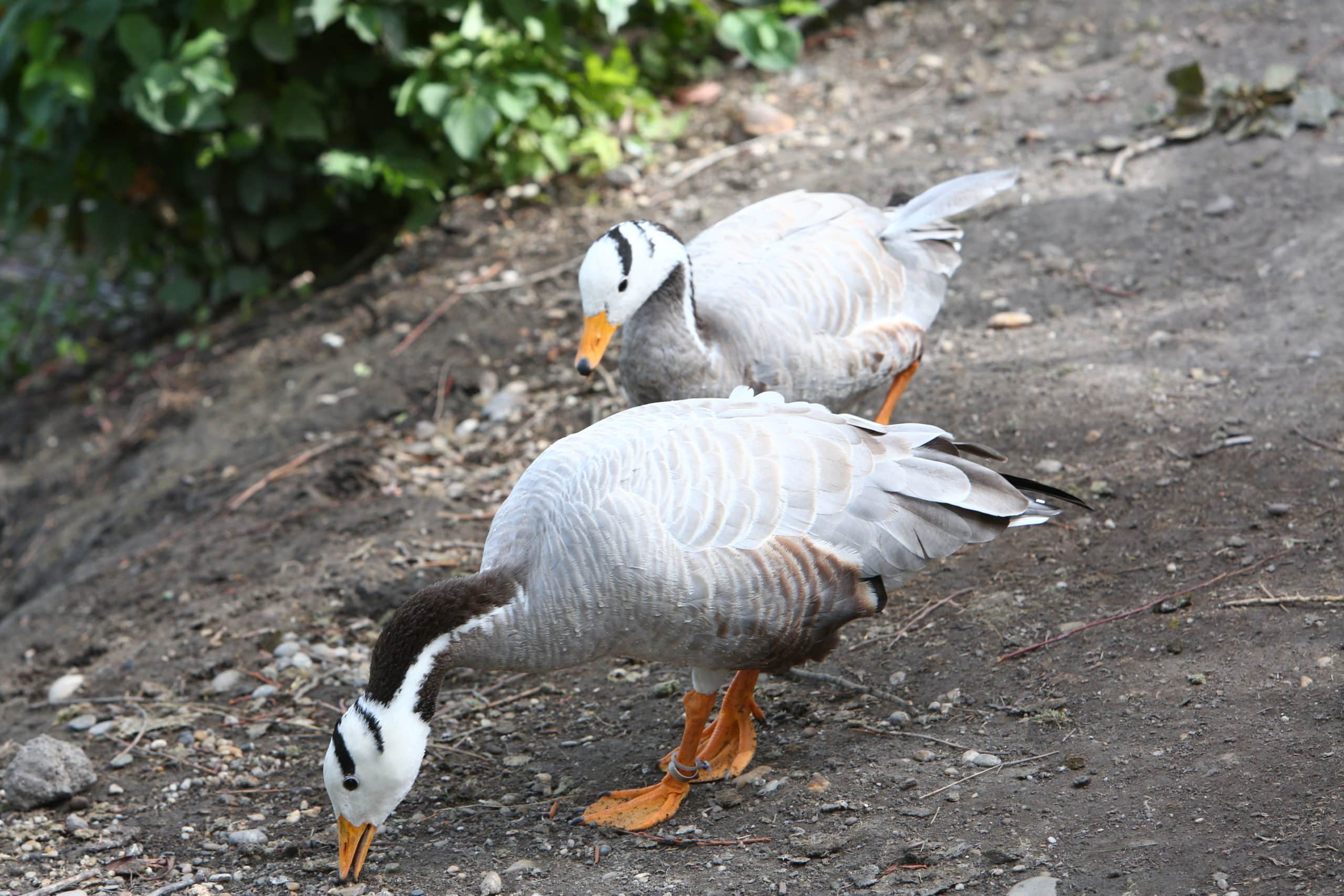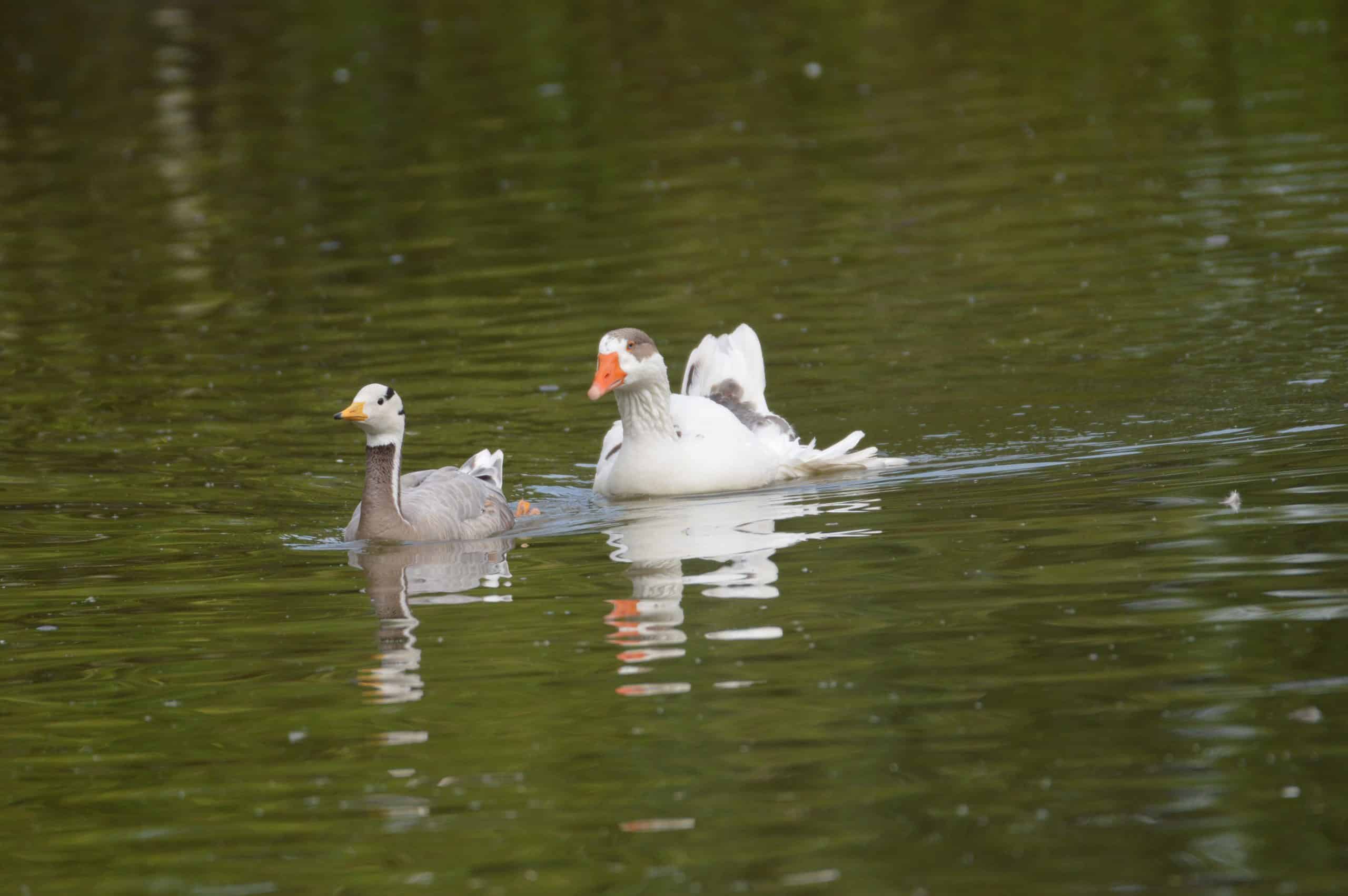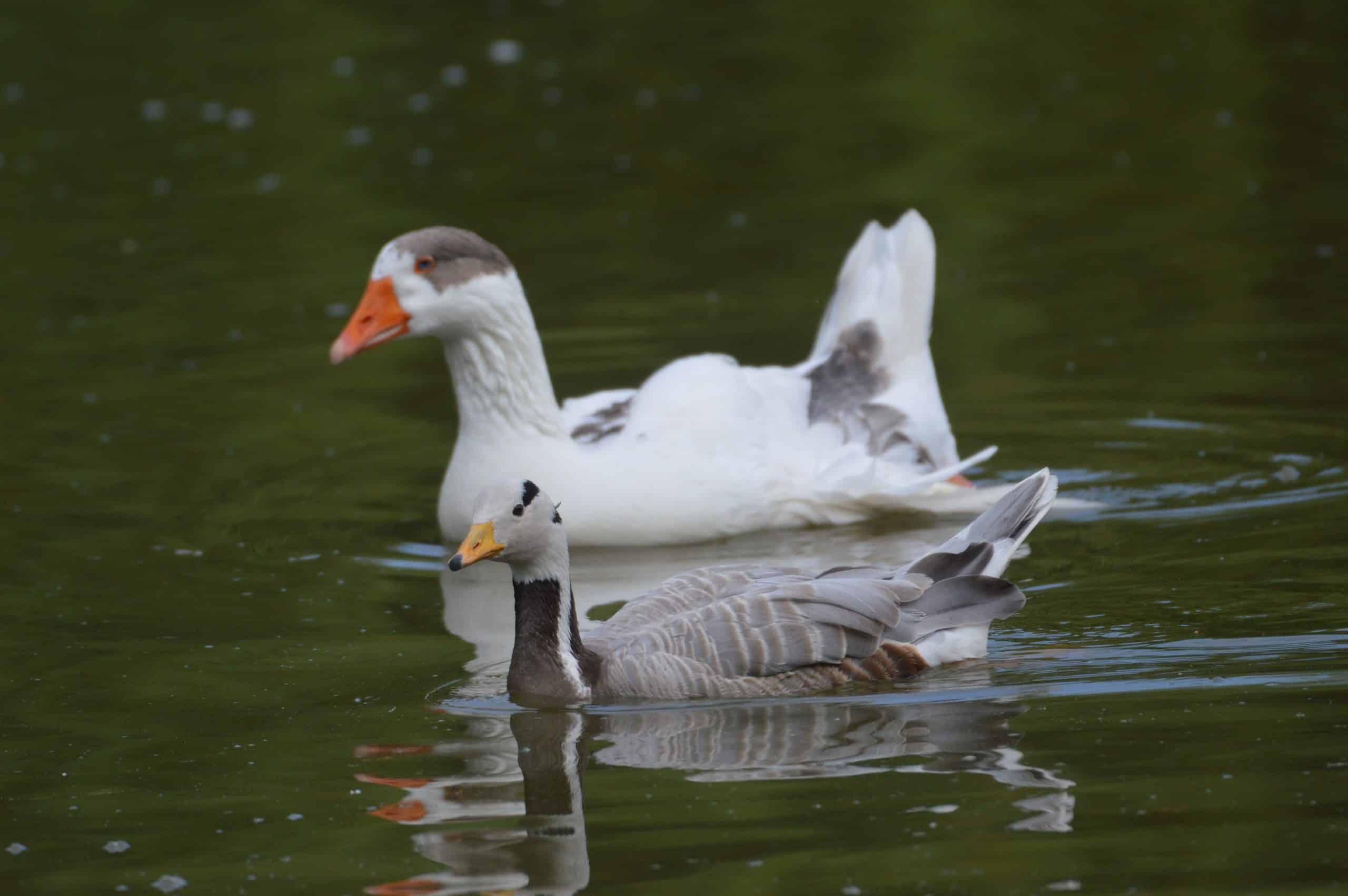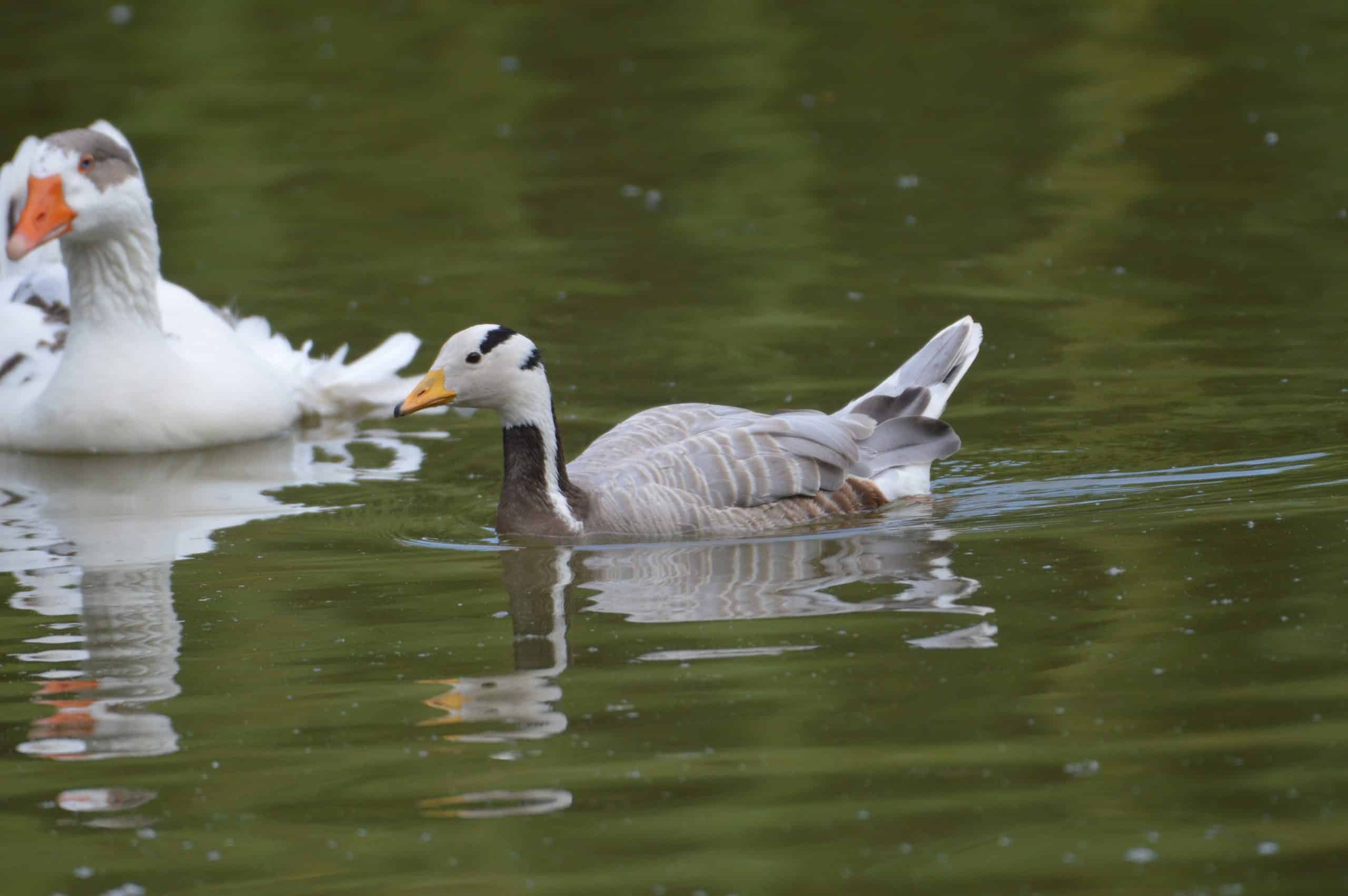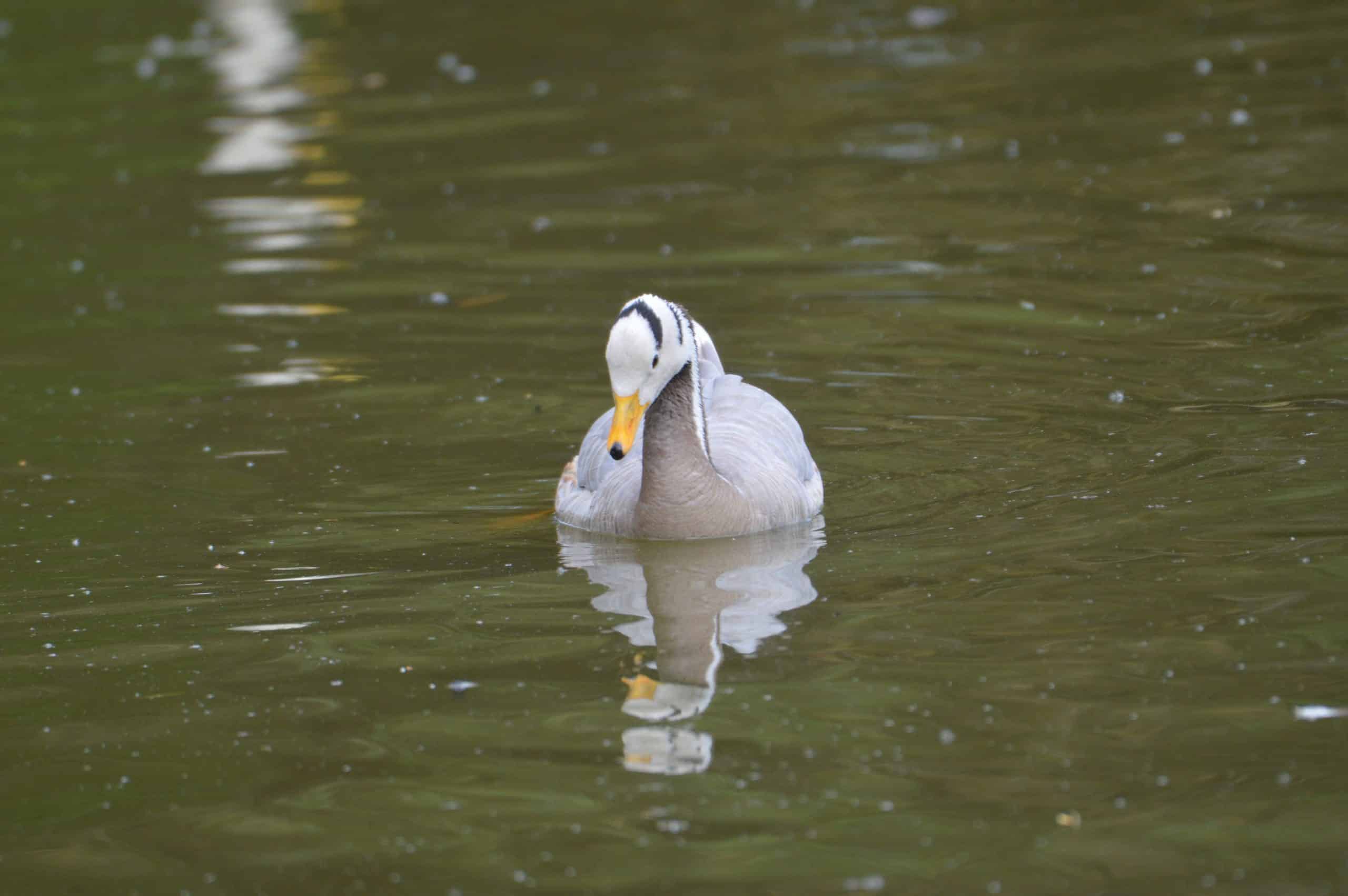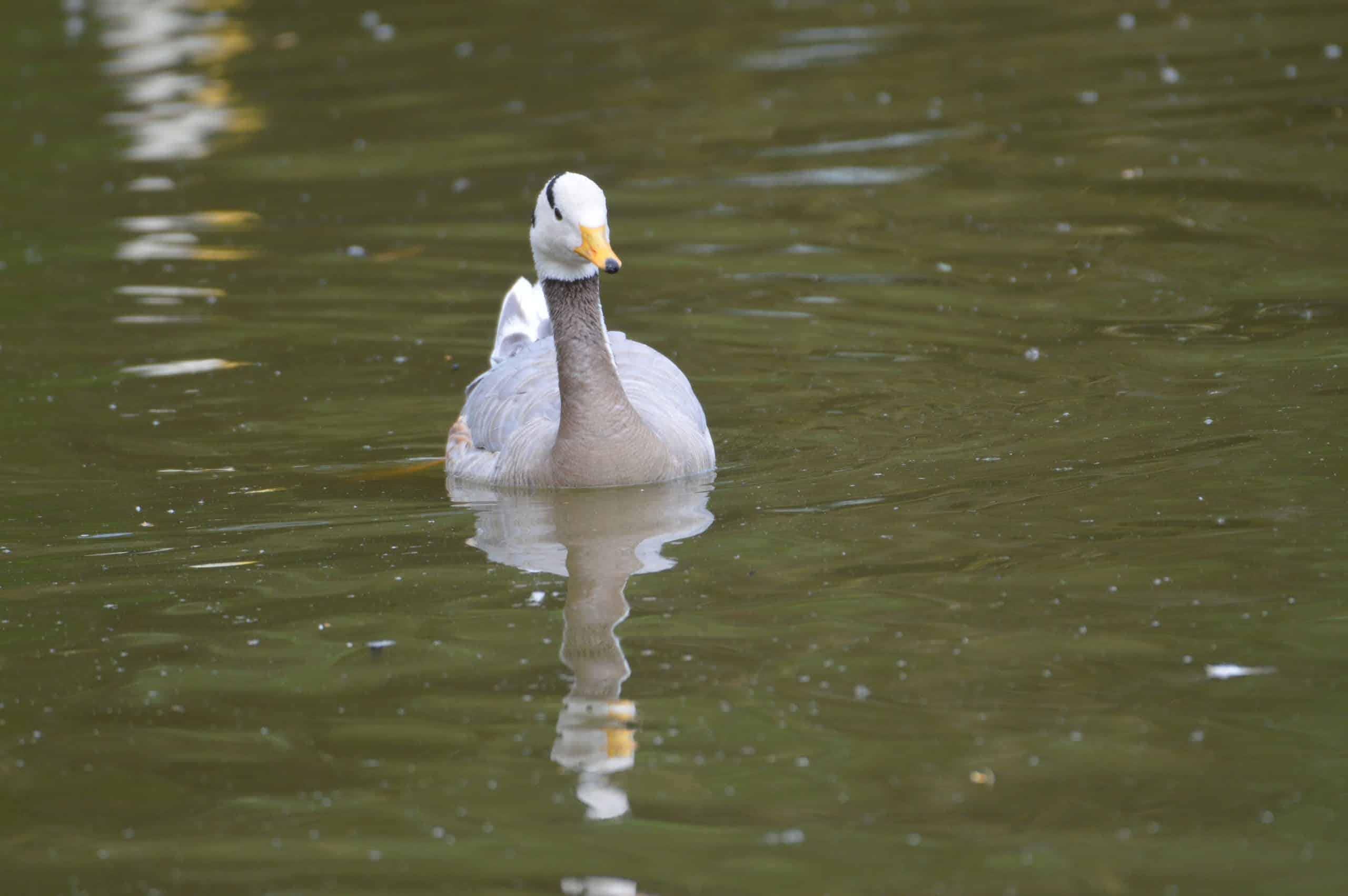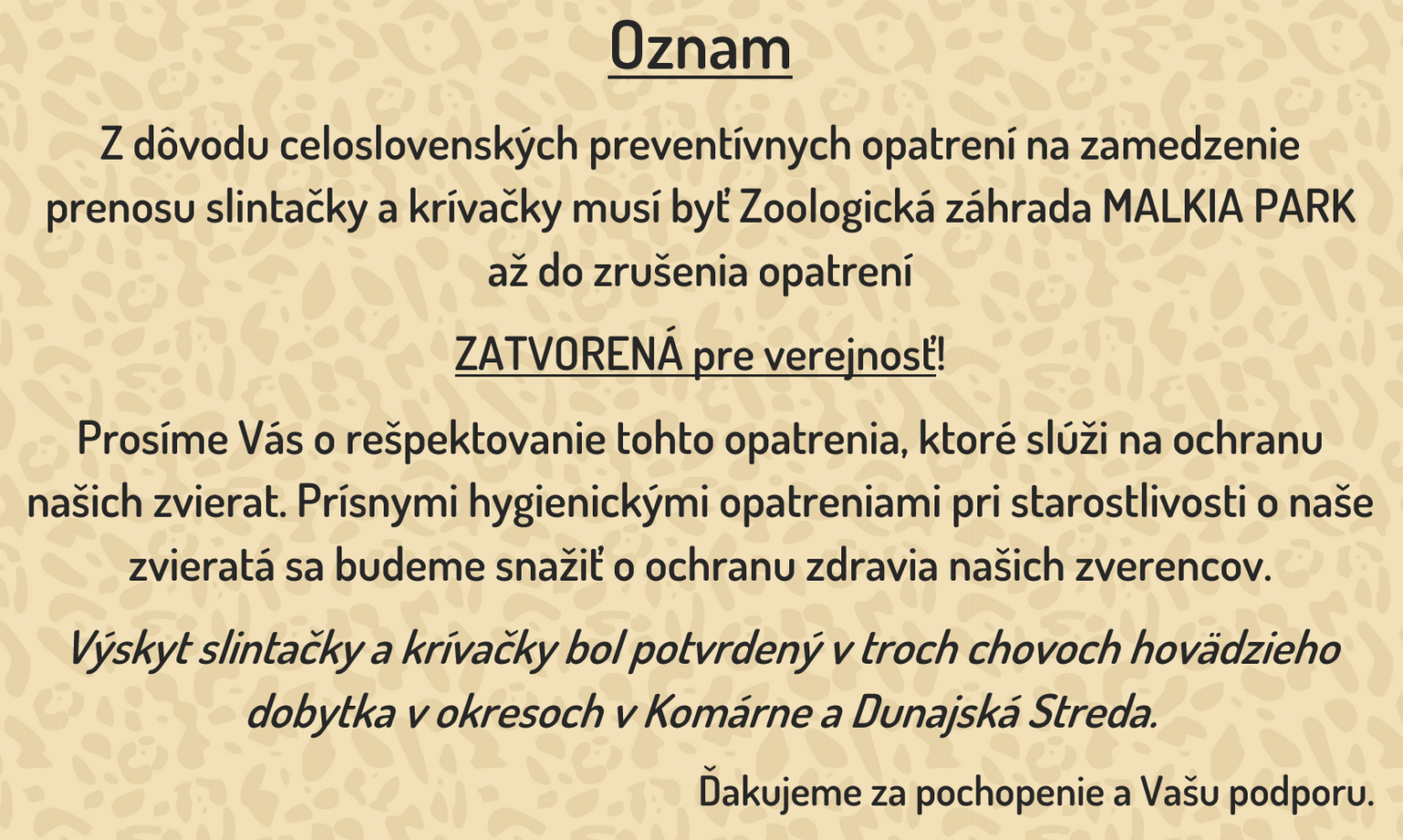Medium sized goose of light grey colour. It can be easily distinguished from other grey geese of the genus Anser by the black stripes on its head. It is also much paler than other geese of this genus. It has a yellow beak with a dark tip, light-orange legs, and a white head with a dark bar running from eye to eye across the upper part of the nape and another running across the lower part of the nape.
It is one of the highest flying birds. It is a migratory bird and is found in certain areas all year round. It nests in high mountain areas and spends winters in lowlands near rivers or lakes. Sometimes they nest alone, but more often in colonies.
Bar-headed geese breathe more deeply and efficiently in low oxygen conditions than other geese. The haemoglobin in their blood has a higher affinity for oxygen, which is attributed to a point mutation of one amino acid. Even its left heart valve, which is responsible for pumping oxygenated blood to the body, has significantly more capillaries.
Bar-headed geese have a slightly larger wing area for their weight than other geese. This adaptation is thought to help them fly at high altitudes by reducing the power required for flight, although they still have to flap their wings more vigorously than lowland birds.
In Slovakia, it was recorded for the first time in 2003 on the Danube at Hrušovská weir pool near Čuňov, and it is assumed that it was an escape from breeding.
